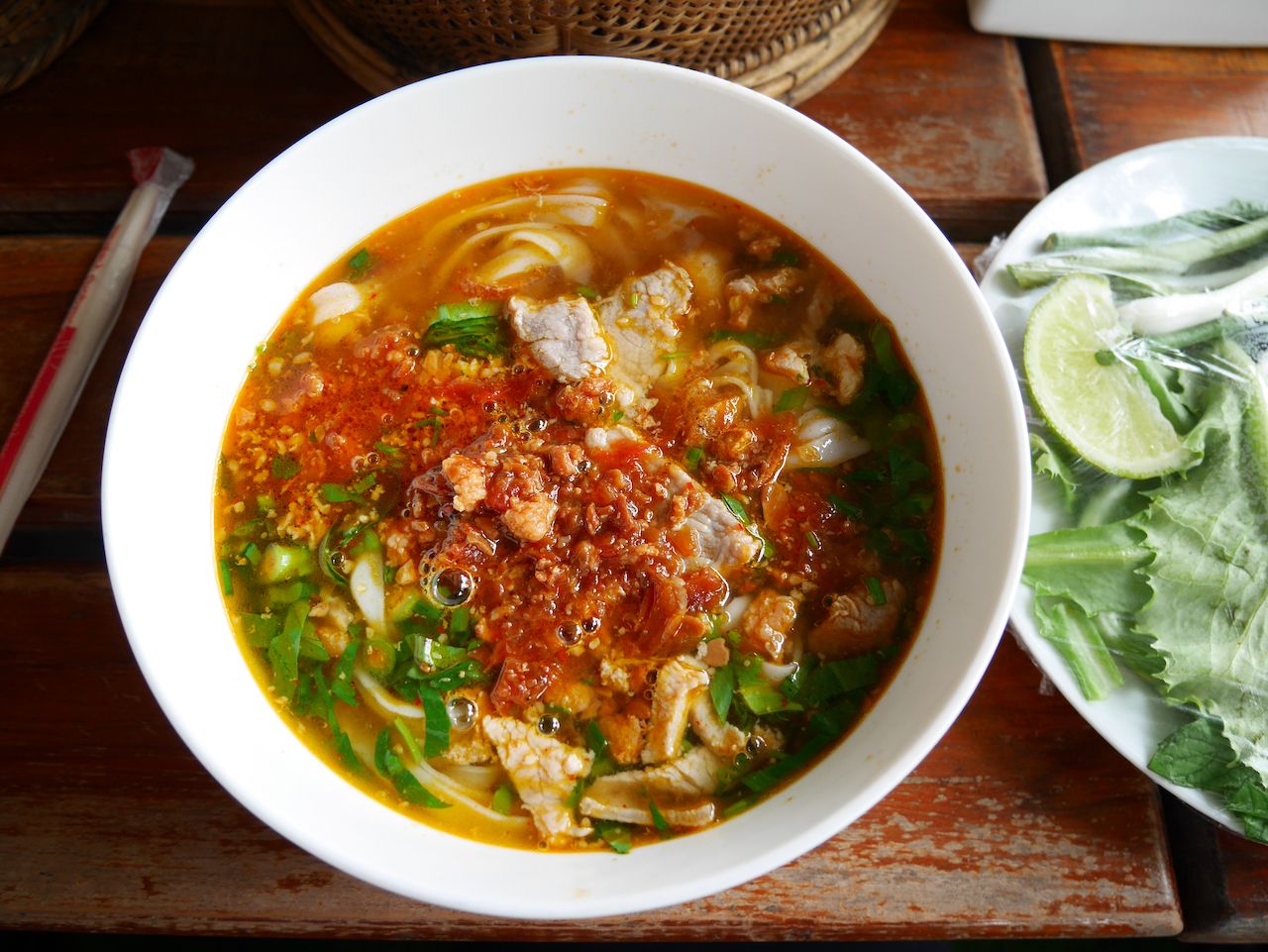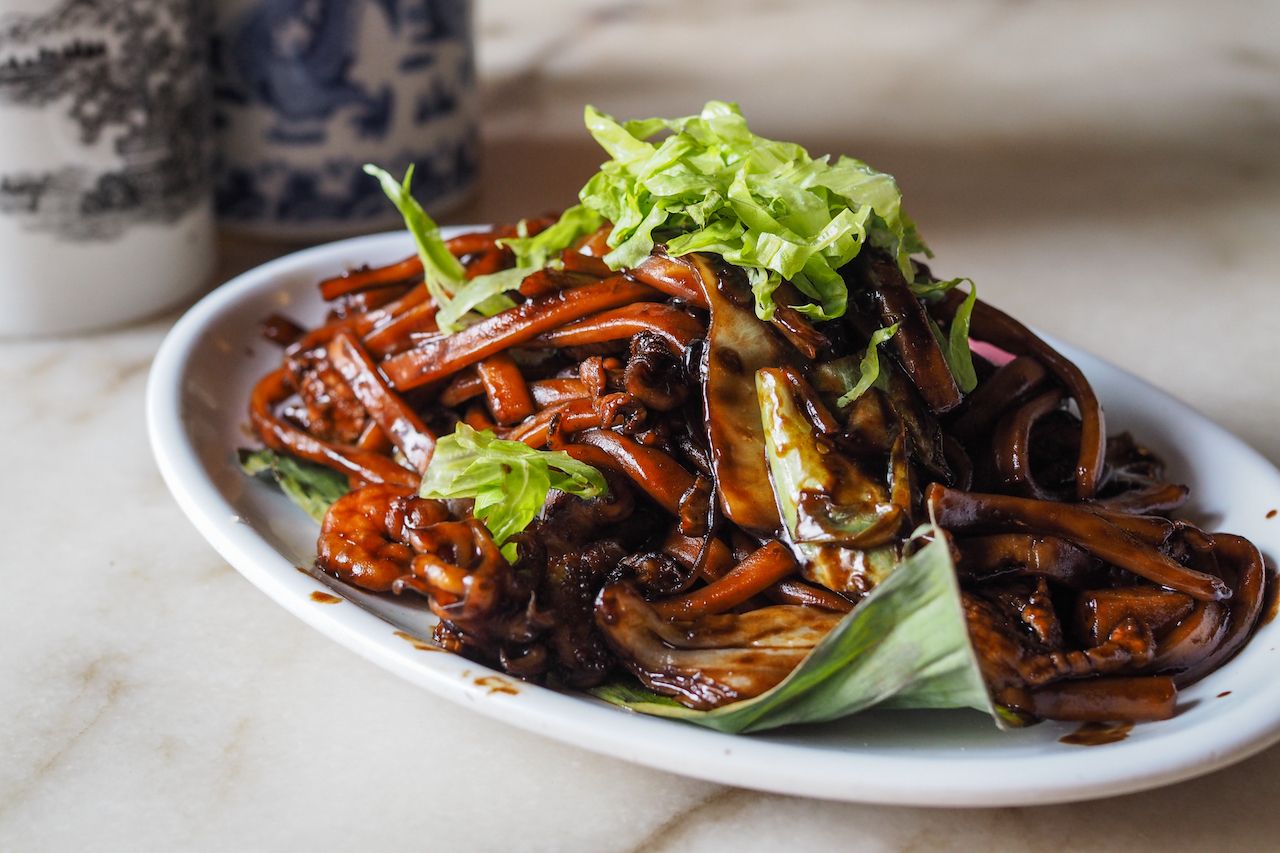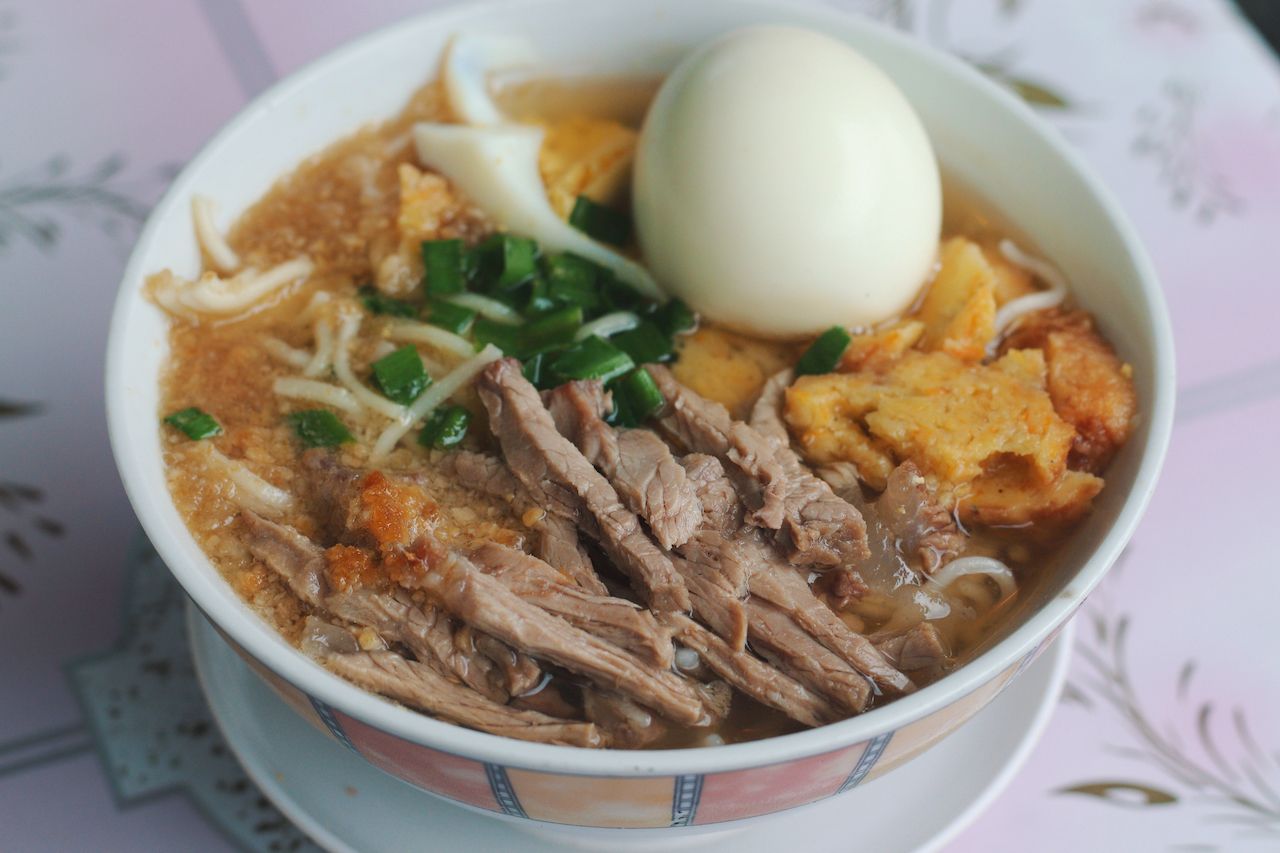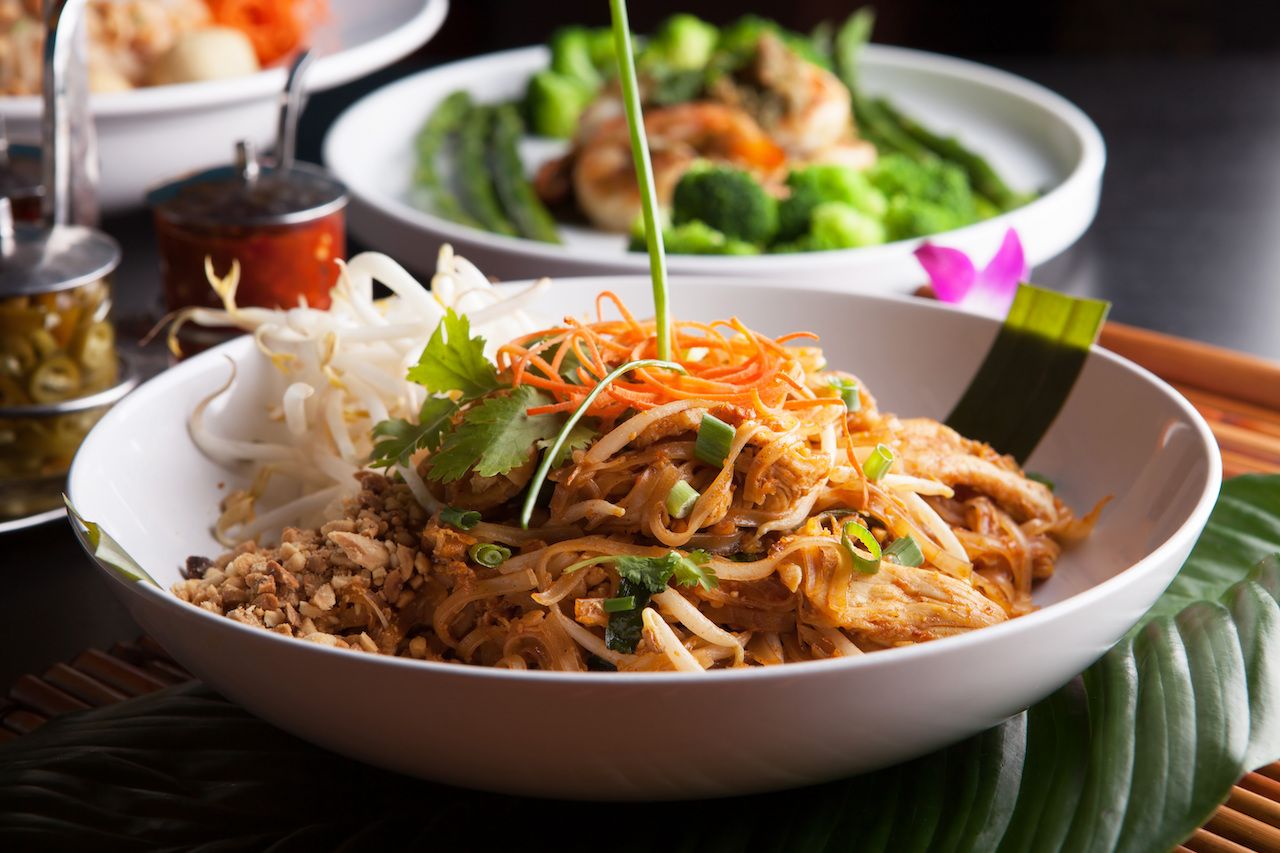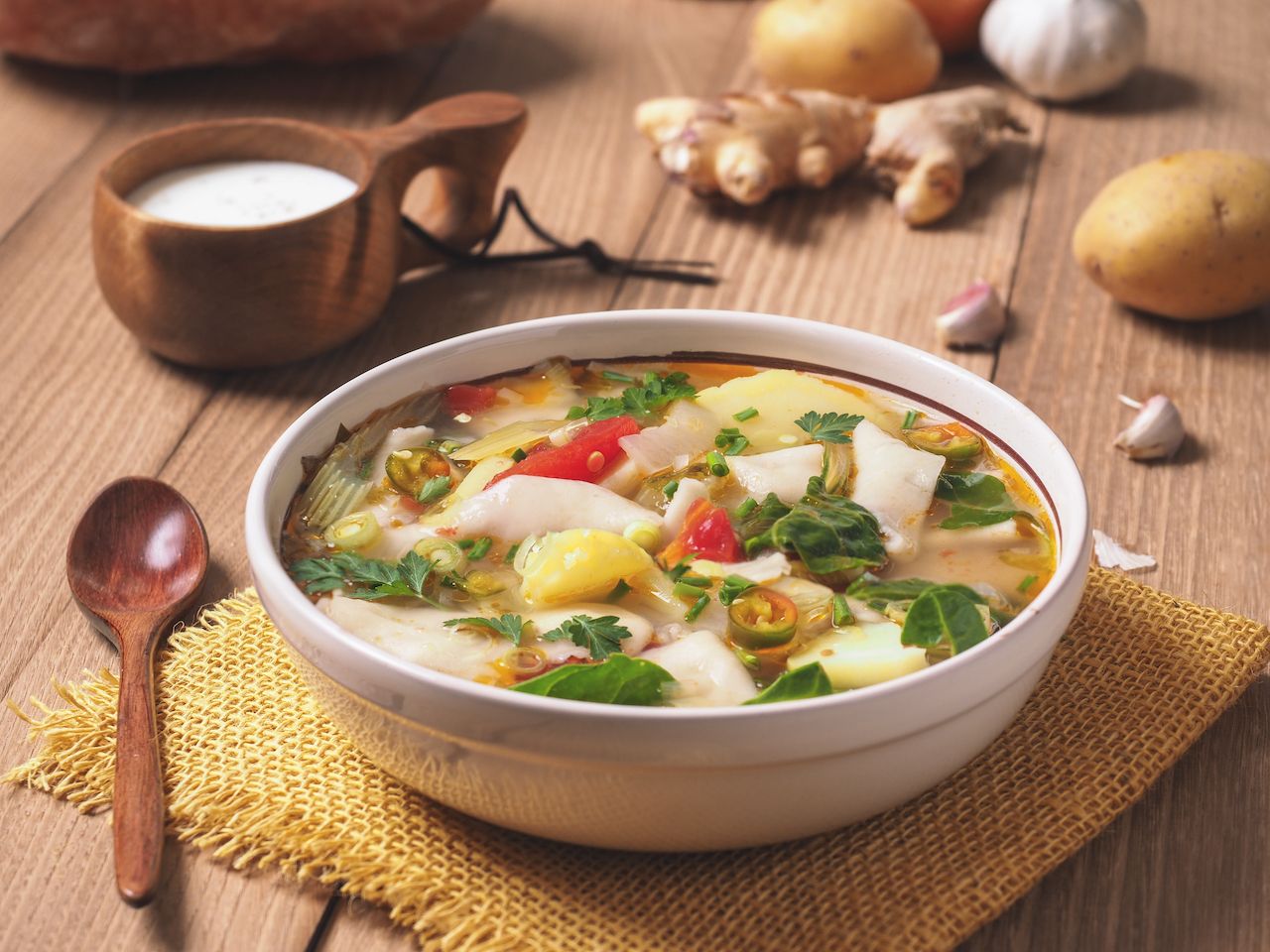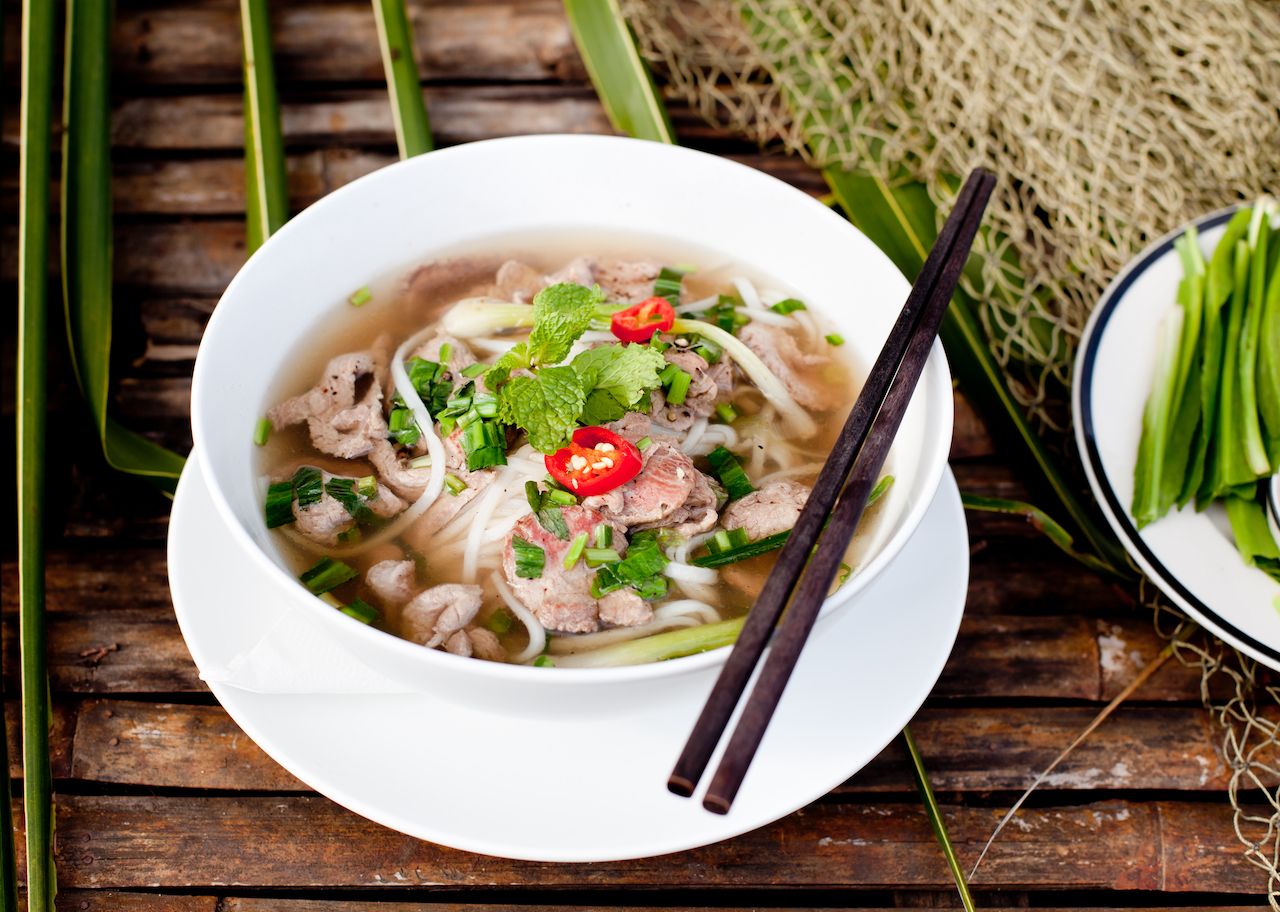KOREA
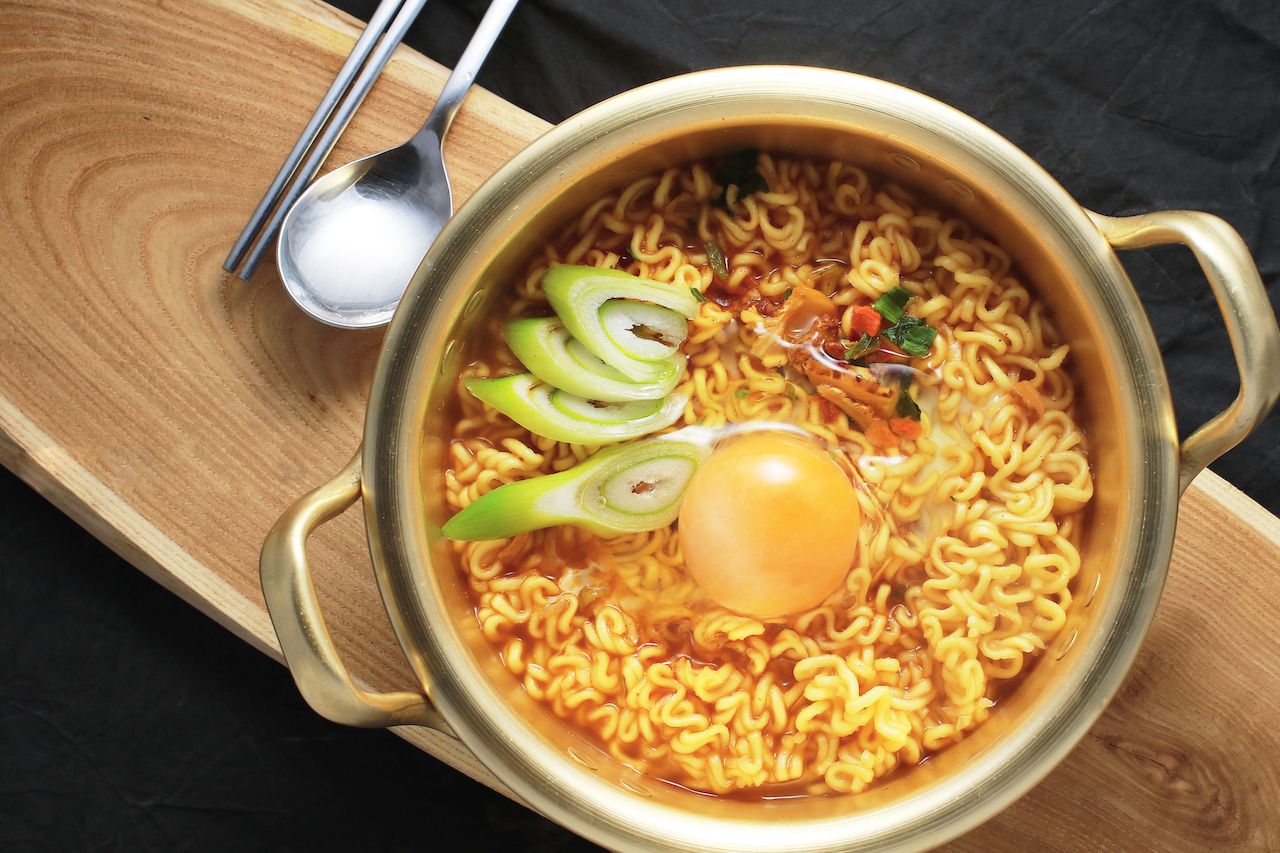
Photo: wong-sang-kim/Shutterstock
35. Janchi guksu (잔치국수)
These thin wheat noodles are served in a light anchovy-based broth (or sometimes a beef-based broth). It’s usually topped with fried egg, zucchini, and gim (edible dried seaweed).
36. Bibim guksu (비빔국수)
This cold dish is prepared with somyeon (a thin wheat-flour noodle), red pepper, gochujang, garlic, vinegar, and sugar. The spicy concoction is particularly popular during the summer and is served with stir-fried beef, pickled cucumbers, and mushrooms, garnished with hard-boiled egg or even slices of Korean pear.

